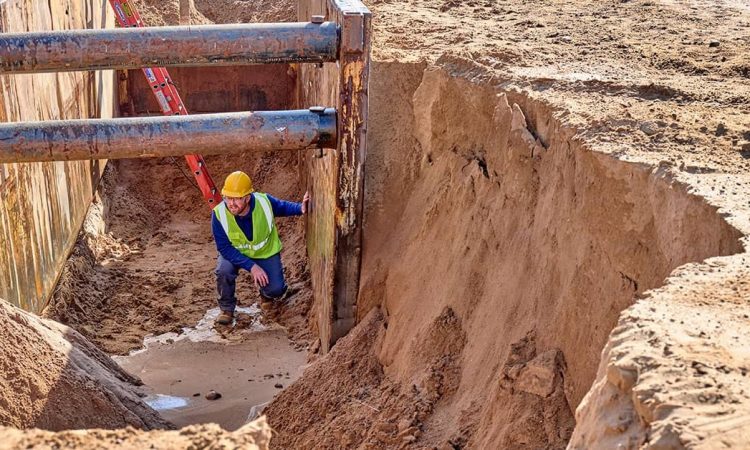
Since excavation and trenching are two of the riskiest construction activities, Trenching Safety Toolbox Talk discussions are essential to worker protection. In order to prevent accidents, injuries, and fatalities, supervisors must provide concise, educational toolbox talks that cover the most crucial safety subjects. Workers will be better able to comprehend the hazards and the actions required to be safe on the job if attention is paid to hazard identification, protective systems, and emergency protocols.
Identifying Trenching Hazards
Explain the typical risks associated with trenching operations to start off your toolbox presentation. Stress risks such utility strikes, water build-up, toxic atmospheres, trench collapses, and falling loads. Assist employees in identifying warning indicators such as soil fissures, vibrations, or unexpected water seepage. Promote ongoing attention to detail and timely reporting of any anomalous circumstances. The gravity of these risks and the necessity of paying close attention might be emphasized via the use of real-world examples or past instances.
Importance of Protective Systems
Protective mechanisms to prevent trench collapses are crucial. Discuss safety measures include trench shields, shoring, benching, and sloping. Based on soil type and trench depth, recommend the optimal time and procedure for each system. Under OSHA guidelines, no worker should walk more than five feet into a trench without protective gear. Show staff how these systems function and why they save lives with graphics or on-site equipment demos.
Safe Procedures for Entering and Leaving
Stress how crucial it is to have secure entrances and exits in trenches. To provide prompt access out of the trench in an emergency, workers should have ramps, ladders, or stairs within 25 feet of every other person. Talk about the risks of scaling trench walls and how unauthorized access might cause falls or delay evacuation in the event of an emergency. Encouraging safe access procedures helps keep employees safe during regular tasks as well as unforeseen crises.
Observation and Atmospheric Examination
Trench hazards including limited oxygen, toxic gases, and combustible vapours are often hidden. Workers should be instructed to regularly monitor air quality, especially in excavations deeper than four feet or near chemical storage. Discuss gas detector operation and what to do if unsafe conditions are observed. This is important because ventilation and monitoring can prevent explosions and serious health issues.
Emergency Procedures and Rescue Plans
Outline emergency reaction procedures in the event of a trench collapse or other incidents as you wrap up your toolbox discussion. Ensure that employees are aware of who to call, where the emergency supplies are kept, and how to administer first aid if qualified. Talk about the value of taking prompt, composed action and the part each employee plays in rescue operations. Regularly going over rescue preparations helps the crew get ready for a quick and efficient response, which could save lives.




